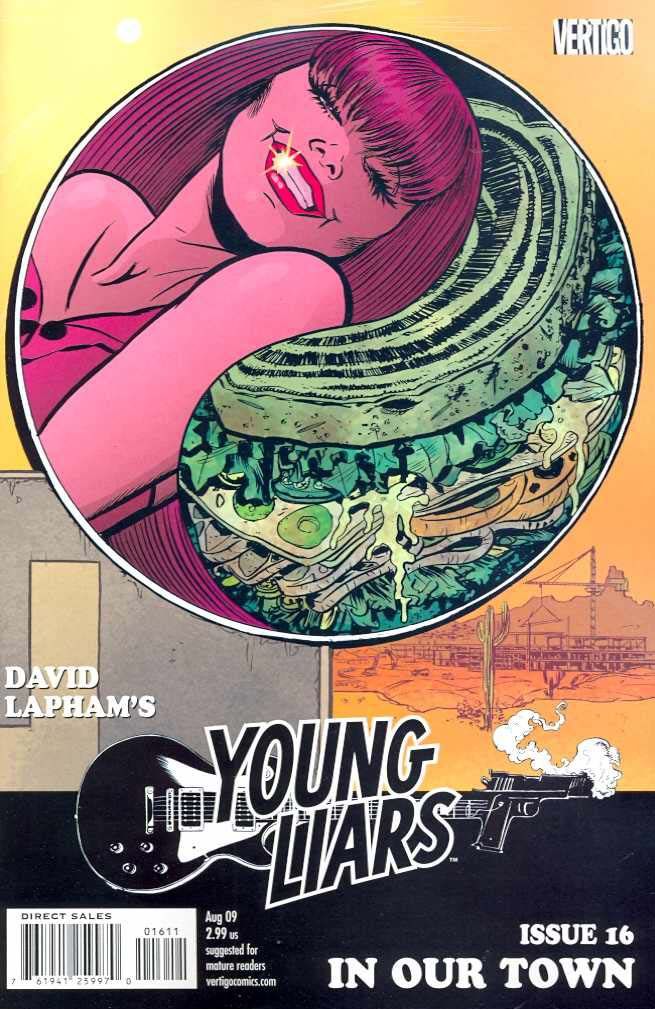Music has played a big part in "Young Liars" to date, with the first year of the book featuring cover images approximately the dimensions of album covers. Or, the second story arc being bookended by "The Spiders from Mars" parts 1 and 2 like Neil Young sometimes does on his albums. Or, the two song recommendations/soundtrack that each issue has at the beginning. After all, the logo is a guitar with a gun at the end of it. The title of this issue is "In Our Town/When the Whore Came," pointing to its nature as a double-song ala "No Sugar Tonight/New Mother Nature" by the Guess Who. Comics as music.
This issue centers on Ronald and his life in Freedom, Arizona -- soon to become Browning, the town where the past three issues have taken place. For the first time in "Young Liars," Danny is nowhere to be seen, only Lorelei and Joan (Kenny's girlfriend from issue two) have been seen before. Ronald likes his life, he owns a sandwich shop, he saw a pair of boobs at a funeral once. His half-sister, Joan, returns to town and makes life even better. Until Lorelei comes to town and ruins it all.
Ronald is obsessed with the idea of yin and yang, so much so that he named his sandwich shop that -- and his favorite sandwich, as well. The issue and the events that occur subscribe to this duality, this symmetry. Events that occur in the first half reoccur in an altered form in the second half.
The construction of the issue as a two-part song is reflected in the way that Lapham tells the story. The first half of the issue is told all in the same page layout: three stacked panels. There is no variation, aside from the first page where the usual placement of the title precludes using that layout (although the title almost acts as a middle panel). Not only that, but there is no dialogue in these panels, just Ronald's narration combined with various images that Lapham chooses carefully, often coming back to images of duality.
Then, in the middle of the issue, he changes it up, shifting to a two-by-four layout in its most basic form, but willing to combine the areas of those panels on some page layouts. What's particularly clever is that he doesn't change it right away, he has a slight overlap between the two halves as the 'song' switches from one melody/beat to another, punctuated with a full-page shot of Lorelei in her car, arriving in two, the event that separates the two halves of this story. Lapham executes this structure and changeover with skill and precision.
Beyond the construction of pages, Lapham's art is very clean this issue as, for the first half, he focuses on creating tableaux images that convey a lot of information and relate to the text. The second half of the issue shifts to more character-based compositions with an emphasis on body language, broken up by the odd panel reminiscent of the first half of the issue.
Back in my review of issue 12, I wrote, "If year two is anything like year one, David Lapham is truly on his way to producing a masterpiece." This issue solidifies that that is, indeed, the case. "Young Liars" is an absolute masterpiece. The competition for 'best issue of the year' begins here.

